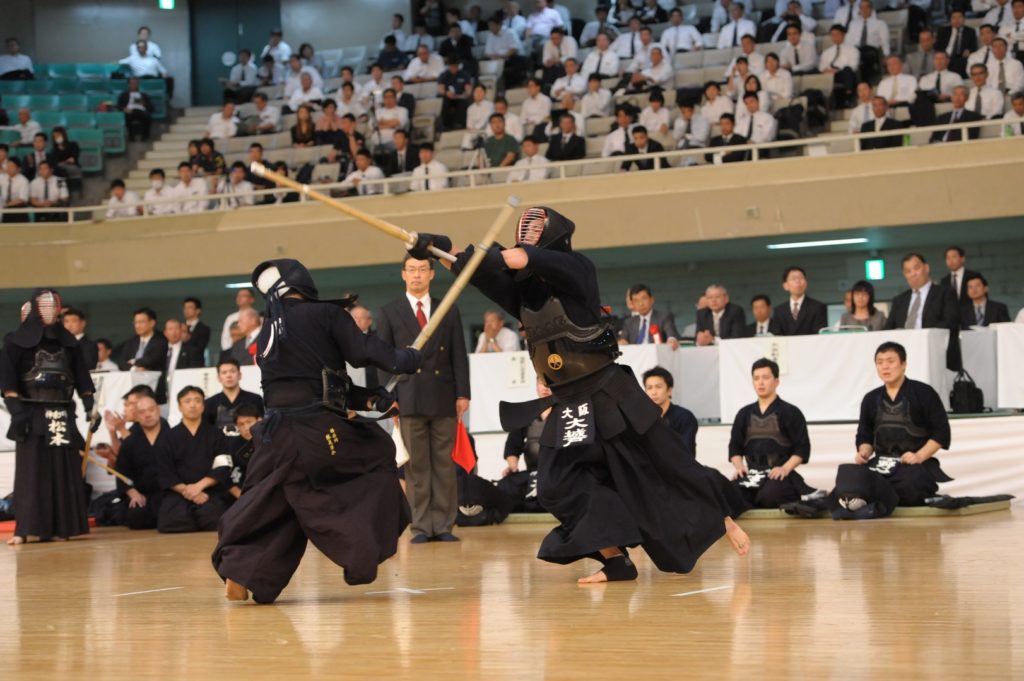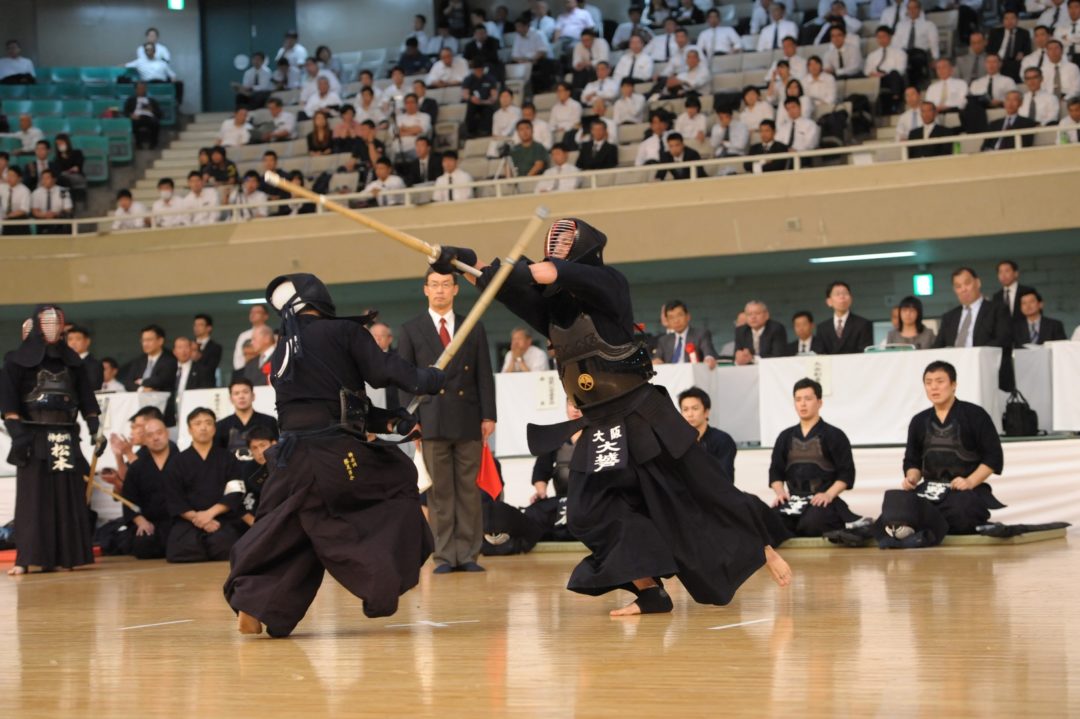2020.3 KENDOJIDAI
Okido Satoru is the captain of the Osaka Prefectural Police Department, which so far has won four consecutive National Police Championships in the first division. He has learned a lot about how to control the center line during his more than 10 years of Tokuren (elite training squad) training. We asked Okido about his experiences and how he came up with more effective ways to take the center line while keeping the situation of his opponents in mind.

Okido Satoru, Renshi 6th Dan
Born in 1984 in Ehime Prefecture, age 35. After graduating from Nitta High School, he went on to study at Kanoya College of Sports and Physical Education. After graduation, joined the Osaka Prefectural Police Department. He took 1st place in the National Police Kendo Championship both for individuals and teams, 1st place at the WKC for individuals and teams, and participated in the All Japan Kendo Championship. Currently, he is the leader of the Police Kendo Tokuren for the Osaka police.
Understanding the opponent’s situation and taking the center
At the National Police Championship in 2016

I think that “applying Seme through the center and striking Men in a single motion”, which everyone learns at the beginning, is the basic and most ideal way to strike. At this time, for Chudan no Kamae, “the left hand should be positioned a fist’s length in front of the lower abdomen, the joint of the left thumb base has to be at the height of the navel and the left fist a little lower than the navel”. According to the same teaching, “the Kensaki should point in between the opponent’s eyes or towards the right eye”.
Basically, I think this teaching of Kamae is important, but after ten years of Tokuren training, my awareness of taking the center has changed and I have come to develop an applied way of thinking about it. This is because I thought that we should think about effective ways to take the center depending on the opponent’s situation such as physique, Kamae, position of the Kensaki, posture and whether the opponent is under pressure or applying pressure.
One of the events that led me to think this way was the 2016 at the National Police Championship team competition, the first division final against Kanagawa Prefectural Police. In the first half of my Fukusho match, I thought I was going to take the center by overwhelming from above in the fight against Katsumi, who attacked strongly, but he struck me with a Kote from below [afterwards, Okido secured two Men Ippon in this match to contribute to the victory].
This was an opportunity for me to rethink the concept of “the center”. At that time, I intended to place my Shinai on the center line. However, I have a relatively large physique, so my left fist and Kensaki are relatively high, and Katsumi was attacking me from below. Under these conditions Katsumi had the right Maai for Kote and because I was trying to take the center, he was able to strike Kote when he needed to.
Each person has his or her own way of Seme, such as from underneath, from the left or right. The opponent changes each time, but if you are putting the Shinai at the same position all the time, wouldn’t that be a mistake? In other words, I think it is important to think about the relationship between Maai and the center. If we can recognize this relationship, we apply Seme through the center effectively.
My main goals are the National Police Tournaments (group and individual competitions) and other national competitions. Many of the players I compete against are in their 20s and 30s, and their movements and game development are very fast, so many different situations can arise. In order to cope with this kind of conditions, it is necessary to have a flexible way of thinking and flexible Kendo.
What is an effective way to take the center?
The rest of this article is only available for Kendo Jidai International subscribers!





